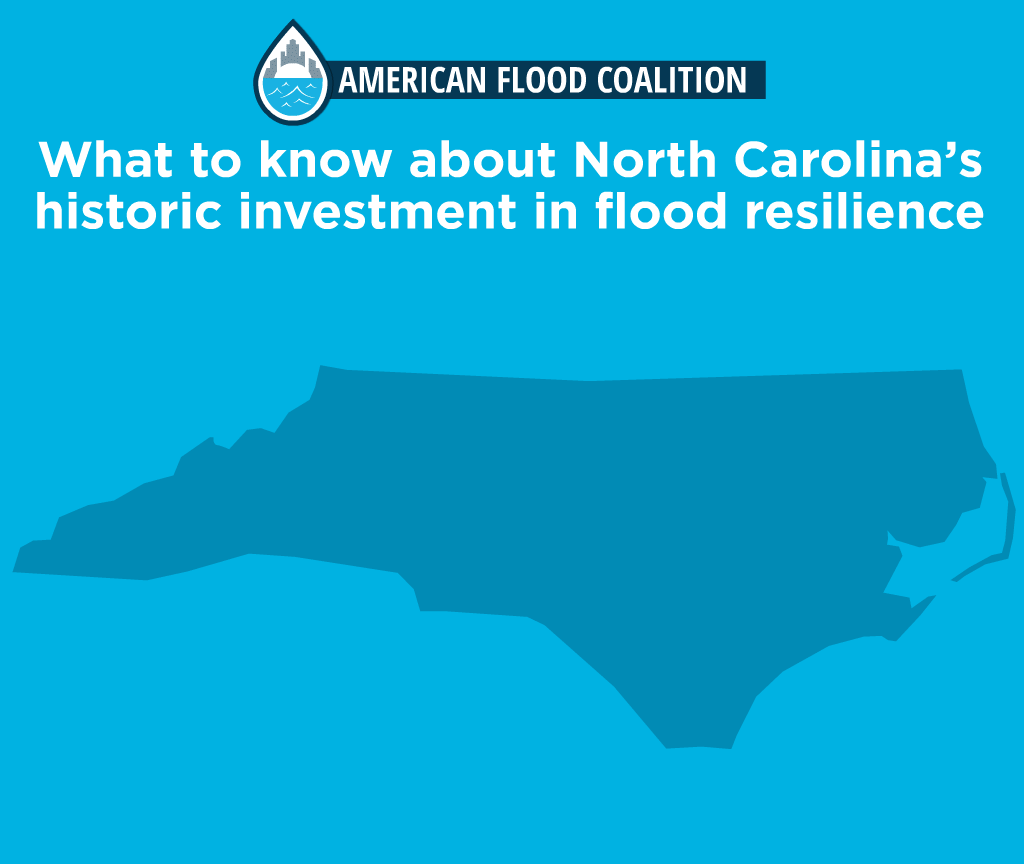November 19, 2021
—
North Carolina just took a big step toward making its state more flood resilient. This week, Gov. Roy Cooper signed into law the state budget for the next year, which includes the largest investment to address flooding in state history.
AFC is thrilled that the North Carolina Legislature made flood resilience a budget priority. The budget, outlined below, includes $800 million for disaster-related programs and projects, with over $400 million available for immediate use.
The funding comes as North Carolina, like much of the country, faces stronger storms and more flooding. Earlier this year, Tropical Storm Fred dumped more than a foot of rain, causing flash floods across Western North Carolina. And in recent years, Hurricanes Matthew and Florence caused $27 billion dollars in damages across the state. The state has spent over $3.5 billion in disaster aid to recover from these two storms alone.
The state budget’s historic investments will go toward risk assessment, planning, projects, and support that will help North Carolina break out of the costly cycle of disaster spending and help communities as they prepare for future flooding.
Here’s what’s in the state budget and what it means for communities:

$20 million to create the Flood Resiliency Blueprint to identify and prioritize projects for the state’s watersheds most affected by flooding, like the Cape Fear and Neuse River Basins.
- The blueprint will determine the flood risk of the most at-risk watersheds and lay out a statewide plan for projects and funding accordingly.
- The blueprint will provide communities with information to make decisions, drive investments, and jumpstart projects.
$6 million in technical assistance to support communities that need help right away.
- For many North Carolina communities, the complex and expensive process to apply for federal funding is a big barrier to overcome.
- The new technical assistance funding will go to regional entities called Councils of Government to help communities of all sizes compete for and access the funds they need.
$140 million to support new and existing programs.
- $30 million will set up a state fund to match FEMA dollars.
- $25 million will establish a fund that provides grants $250,000 and under for projects to reduce flood risk.
- $15 million will establish a disaster relief fund (Disaster Relief and Mitigation Special Fund) to help communities pay for flood-reduction projects and support pre-development activities to help underserved communities develop shovel-ready projects.
- $15 million will establish a transportation resilience fund that ensures communities have access to critical supply and evacuation routes. The fund will go toward:
- Projects that update and prepare transportation infrastructure for storms, mudslides, and flooding by considering future risk.
- Risk assessments for critical transportation routes, building on existing and future reports.
- Community-informed flood risk and vulnerability assessments that identify resilience gaps and projects for vital transportation routes after floods.
$124 million to help communities recover from Tropical Storm Fred, which dumped a foot of rain in some places, swelling rivers, triggering mudslides, and leveling buildings across the state.
How can communities prepare?
Though the budget is now law, it may take some time before all the funding is available at the local level. To prepare for the eventual release of these funds, communities should consider taking the following actions:
- Complete flooding and sea level rise planning measures, such as flood or sea level rise vulnerability assessments, stormwater master plans, or hazard mitigation plans.
- Determine flood-protection projects that might be eligible for state funds and ways to meet requirements.
- Consider a range of funding sources to make projects a reality. Local and state dollars can often pair with federal funds to satisfy local match requirements for grants.
AFC was proud to work with North Carolina lawmakers as they laid out a comprehensive strategy to address flooding and invest in the future of North Carolina’s communities. This landmark legislation embeds resilience across the state and will help North Carolina be better prepared for a future of stronger storms and rising seas.
For more on reducing flooding in your community, check out some of these AFC resources:
- Flood Funding Finder tool: helps communities find existing federal grants
- Adaptation for All guide: highlights many flood resilience projects that local leaders can use in their community.
- Conversations with Communities guide: offers ways to improve social equity in disaster preparedness and recovery.






